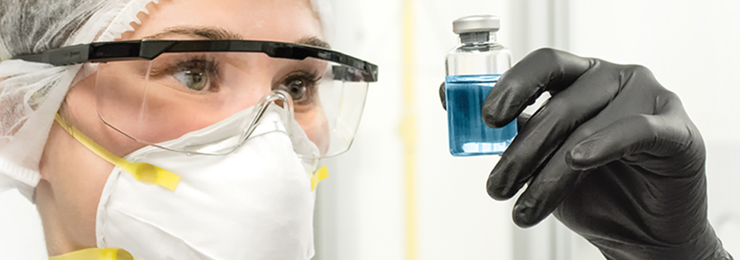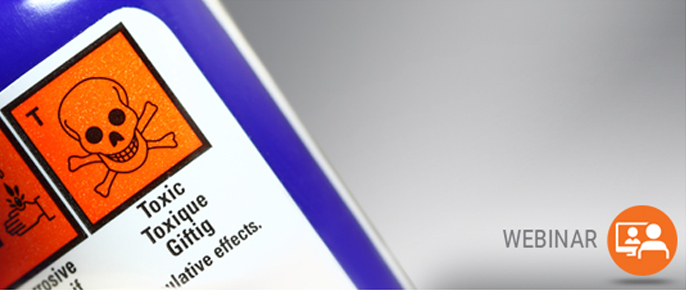Find answers to common questions about being compliant with USP <800> and how it will impact your compounding pharmacy practice. |
General Chapter <800> Hazardous Drugs–Handling in Healthcare Settings was formally published February 1, 2016 in the First Supplement to USP 39-NF 34. USP <800> is established in concert with USP General Chapters <795> for non-sterile compounding and <797> for sterile compounding. The purpose of the chapter is to provide standards and define processes to protect personnel, patients, and the environment when handling hazardous drugs (HDs) in a healthcare setting. Building on existing standards and guidelines, General Chapter <800> provides a comprehensive approach for handling hazardous drugs with the ultimate goal of preventing and/or minimizing exposure to hazardous drugs.
Yes – USP <800> is established in concert with USP General Chapters <795> for non-sterile compounding and <797> for sterile compounding.
The chapter applies to healthcare personnel and entities that handle hazardous drugs; this list includes pharmacists, pharmacy technicians, nurses, physicians, physician assistants, home healthcare workers, veterinarians, and veterinary technicians.
The chapter does not list specific hazardous drugs, but refers to the most current National Institute for Occupational Safety and Health (NIOSH) list of Antineoplastic and Other Hazardous Drugs in Healthcare Settings. Drugs identified on this list are considered hazardous or potentially hazardous with respect to at least one of the following six criteria: carcinogenicity, teratogenicity or developmental toxicity, reproductive toxicity in humans, organ toxicity at low doses in humans or animals, genotoxicity, and new drugs that mimic existing hazardous drugs in structure or toxicity. To view for a full list of hazardous drugs please visit https://www.cdc.gov/niosh/docs/2016-161/pdfs/2016-161.pdf.
USP <800> became official on December 1, 2019, although it is currently informational only and not compendially applicable (for the latest from USP, please click here). While USP <800> may not be compendially applicable, it is important to check with your State Board of Pharmacy for current regulations with respect to Hazardous Drug (HD) handling, as they may already have, or are in the process of adopting USP <800>, either in part or in whole. In light of this, waiting too long to begin the implementation process and ensuring HD compliance could negatively impact your practice. It is critical that pharmacies that compound HDs prepare their equipment, processes, and staff for the requirements of USP <800>.
When not properly protected through the use of personal protective equipment and engineering controls, occupational exposure has been shown to be associated with health effects such as skin rashes, decreased fertility, spontaneous abortions, congenital malformations, and possibly leukemia and other cancers.
Even if the right controls (e.g., personal protective equipment, engineering controls) are in place, occupational exposure can occur if these controls are not being used properly or if personnel are inappropriately handling hazardous drugs. Personnel training and verification of competency is imperative to risk minimization in the workplace, making it one of the most important aspects of a hazardous drug exposure control program. Pharmacy personnel must be educated and trained in all aspects of working with hazardous substances. Any personnel expected to handle or come in contact with a hazardous substance, either directly or indirectly, should complete a thorough training program on working with hazardous drugs as well as risk mitigation techniques.
Facilities that handle hazardous drugs must have a hazardous communication program in place. As such, each employee who may be exposed to hazardous chemicals when working shall be provided with information regarding the occupational risks associated with the facility-specific hazardous drugs and training on proper handling procedures, prior to their initial assignment to work with a hazardous chemical.
Segregation is an important aspect of exposure control and there must be designated equipment for hazardous drug compounding as this will minimize the likelihood of cross-contamination. Hazardous compounding equipment that requires segregation from non-hazardous compounding equipment may include balances, mortars, pestles, spatulas, stir bars, beakers, cylinders, and counting trays. Pharmacies must also perform a risk assessment to determine whether specific technologies can be used with hazardous drugs. For example, hazardous drugs in the form of capsules and tablets must not be placed in an automated counting machine or packaging machine as these devices put stress on the dosage form, potentially resulting in the release of powder into the work environment.
Containment-Primary Engineering Controls (C-PECs) for both sterile and non-sterile compounding must be housed within a room segregated from non-hazardous compounding rooms. This room is called the Containment-Secondary Engineering Control (C-SEC) and must maintain negative pressure with respect to the adjacent rooms, such that if contamination were to occur, it would be contained within the room by the inflow of air down a gradient of between 0.01-0.03 inches of water column. The C-SEC must also maintain the minimum Air Changes Per Hour (ACPH) as described by USP <800>. Furthermore, the room must be externally exhausted to the outside of the building. For sterile compounding, the C-SEC must also maintain compliance with the required ISO quality air as described in USP <797>.
According to USP <800>, C-PECs used for non-sterile hazardous drug compounding must be externally vented through HEPA filtration (preferred) or internally vented through at least two HEPA filters in series. For sterile hazardous drug compounding, the C-PEC must be externally vented through HEPA filtration.
CSTDs are a supplemental engineering control that should be used as an adjunct to primary and secondary engineering controls. The use of CSTDs has been shown to effectively reduce surface contamination and worker exposure, but does not totally eliminate the risk.
Yes, gloves worn for hazardous compounding are required to meet the American Society for Testing and Materials (ASTM) standard D6978 (or its successor). Double gloving is required when working with hazardous substances.
Need help preparing for USP <800>? Check out our offerings below! |
Live Trainings
Webinar

 Facebook
Facebook X
X LinkedIn
LinkedIn Forward
Forward




